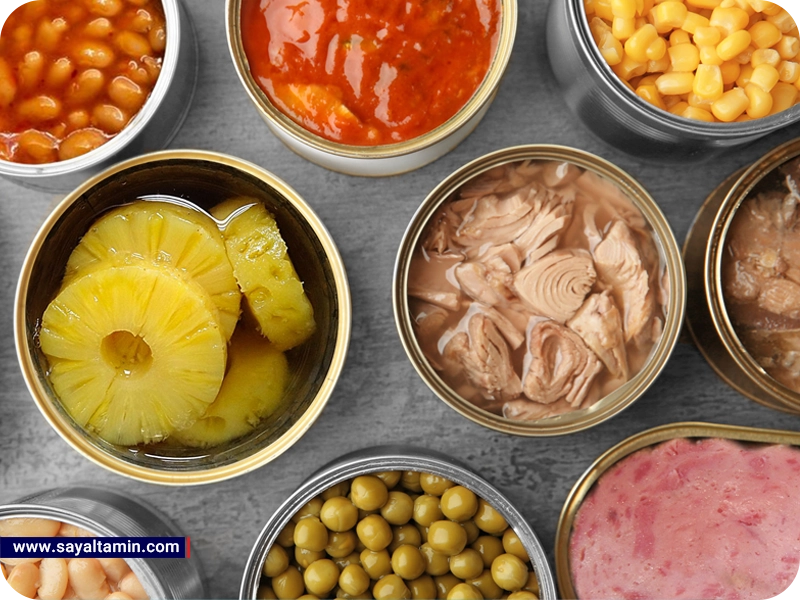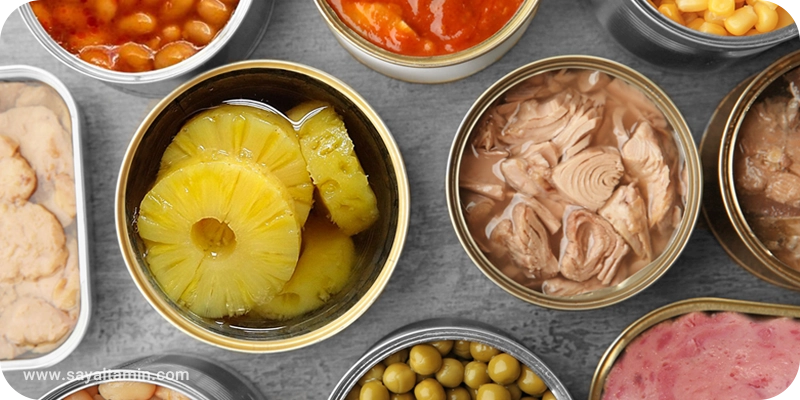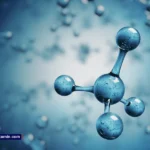This post is also available in: Persian
Carbon dioxide (CO₂) is a colorless, odorless, and non-flammable gas that can be used in three physical states: gas, liquid, and solid (commonly known as dry ice). In the food industry—particularly in canning and preservation processes—CO₂ plays a vital role in maintaining product quality, extending shelf life, and preventing microbial spoilage. Thanks to its unique physical and chemical properties, CO₂ is widely recognized as a natural and effective agent for enhancing food safety, preserving flavor and texture, and reducing reliance on synthetic additives.
Key Applications of CO₂ in Canning and Food Preservation
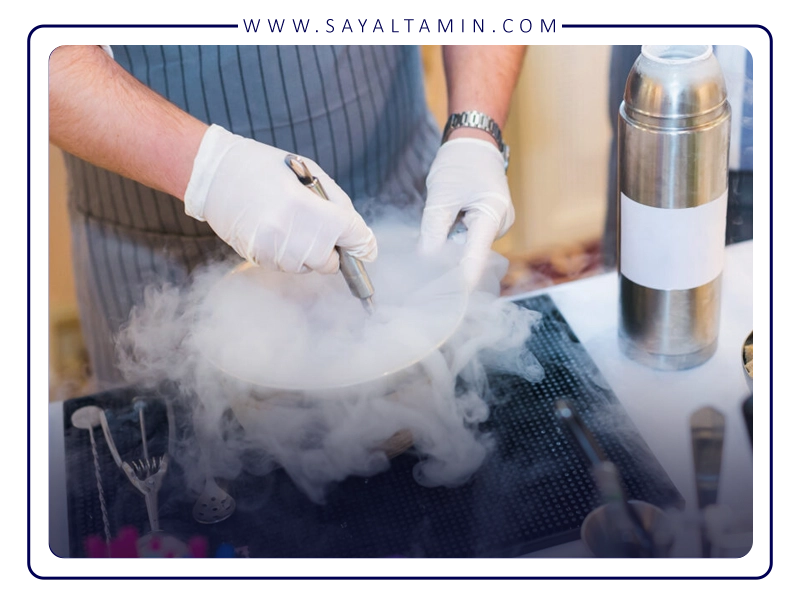
1. Modified Atmosphere Packaging (MAP)
This technique involves altering the gas composition inside food packaging to inhibit microbial growth. Increasing CO₂ levels to 20–60% is one of the most effective ways to suppress the development of bacteria and molds. When CO₂ dissolves in the moisture content of food, it forms carbonic acid, which lowers the pH and creates an unfavorable environment for microbial activity.
This method is particularly effective for high-moisture foods such as meat, seafood, and fresh vegetables. However, it’s crucial to manage internal pressure, as excess CO₂ absorption can lead to vacuum formation or pressure loss, potentially compromising product quality. Therefore, precise control of gas concentration and appropriate selection of packaging films are essential.
2. Controlled Atmosphere (CA) Storage
In long-term storage of fresh produce—especially apples, pears, and bananas—adjusting gas concentrations in storage environments is a common practice. Oxygen levels are reduced to around 1–3%, while CO₂ is increased to 3–10%. This atmosphere slows down fruit respiration and ripening processes, thereby delaying spoilage.
3. Cryogenic Cooling and Freezing Using Liquid CO₂
Due to its extremely low boiling point, liquid CO₂ is ideal for rapid freezing (also known as cryogenic freezing). This method quickly brings food to freezing temperatures, preserving cellular structure, color, taste, and texture.
It is especially beneficial for delicate products like fish, meat, and fresh vegetables, as it prevents the formation of large ice crystals that could damage tissue structure and degrade quality.
4. Supercritical CO₂ (SC-CO₂) Processing
At temperatures around 45–50°C and pressures between 8–12 MPa, CO₂ enters a supercritical state with both gas-like and liquid-like properties, including low viscosity and high diffusivity. This allows it to penetrate bacterial cell walls and rapidly inactivate microorganisms.
Laboratory studies on products like hamburger patties and cured meats have shown that exposure to supercritical CO₂ for just 5 minutes at 50°C and 12 MPa can reduce microbial counts by 2.5 to 3 logs and eliminate yeasts and molds—without affecting taste, color, or texture. The antimicrobial effects are stable for up to 30 days under refrigeration. One of the key advantages is the preservation of nutritional and sensory qualities due to the absence of heat treatment.
| Read more: Use of carbon dioxide in the water purification process |
5. Non-Thermal Disinfection and Pasteurization
Supercritical CO₂ also serves as an effective non-thermal pasteurization method. Its potent antimicrobial properties make it suitable for eliminating pathogens, molds, and yeasts without degrading nutrients, color, or flavor.
In industrial applications, food products are packaged in pressure-resistant containers and exposed to pressures of 60 to 150 bar for several minutes. This increases product safety and shelf life while preserving freshness and quality.
Key Advantages of Using CO₂ in Canning
Microbial Inhibition:
CO₂ suppresses microbial growth by lowering pH and creating an inhospitable environment. Injecting CO₂ into the headspace of canned products also reduces the presence of aerobic microbes.
Flavor and Quality Preservation:
CO₂ helps maintain natural flavor and prevents enzymatic and oxidative changes, and in some cases, it may even enhance flavor.
Reduced Use of Chemical Preservatives:
Its antimicrobial effect allows manufacturers to reduce or eliminate synthetic additives, offering cleaner-label, healthier products.
Extended Shelf Life:
Controlling microbial activity and preserving product quality enables longer storage periods and reduces spoilage.
Texture Improvement:
For fruits and vegetables, CO₂ helps maintain firmness and crispness, preventing the breakdown of tissue structure over time.
Critical Considerations for CO₂ Use in Food Processing
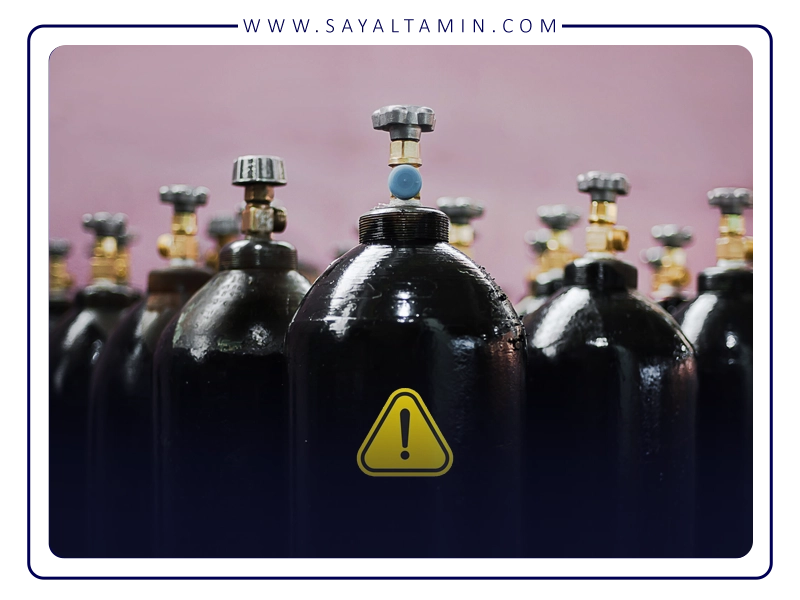
Precise Gas Concentration Control
Incorrect CO₂ levels can lead to undesirable changes in flavor (e.g., overly acidic or sharp taste), texture, or appearance. It’s essential to conduct preliminary tests, use accurate gas regulators, and monitor product quality continuously.
Not a Replacement for Thermal Sterilization
CO₂ cannot replace traditional thermal sterilization, particularly in eliminating anaerobic pathogens such as Clostridium botulinum, the bacteria responsible for botulism. It should be used as a complementary method, not a standalone solution.
| Must read: Use of liquid carbon dioxide (CO2) in the oil industry |
Product Sensitivity to CO₂
Some foods—especially fruits, vegetables, and dairy—may be sensitive to CO₂, experiencing undesirable changes in texture, color, or taste. In such cases, careful adjustment or alternative methods are recommended.
Safety and Hygiene Protocols
High-pressure CO₂ can pose explosion risks, particularly if packaging is not properly sealed. Changes in pH can also affect product safety. Ensuring compliance with safety standards, proper equipment use, and regular process monitoring is critical.
Packaging Material Compatibility
Some packaging materials are permeable to CO₂, which may cause gas loss over time. In addition, high internal pressure can compromise structural integrity. It is crucial to use CO₂-resistant materials designed for high-pressure applications.
Economic Considerations
CO₂-based preservation technologies often require specialized equipment and regular gas supply, leading to higher initial and operational costs. Cost-benefit analysis, optimized gas usage, and strategic supplier selection are necessary to maintain economic viability.
Regulatory Compliance
Compliance with national and international food safety regulations—such as those issued by the FDA and EFSA—is essential. Staff training and transparent consumer communication are also key components of responsible implementation.
————————————————–
References

